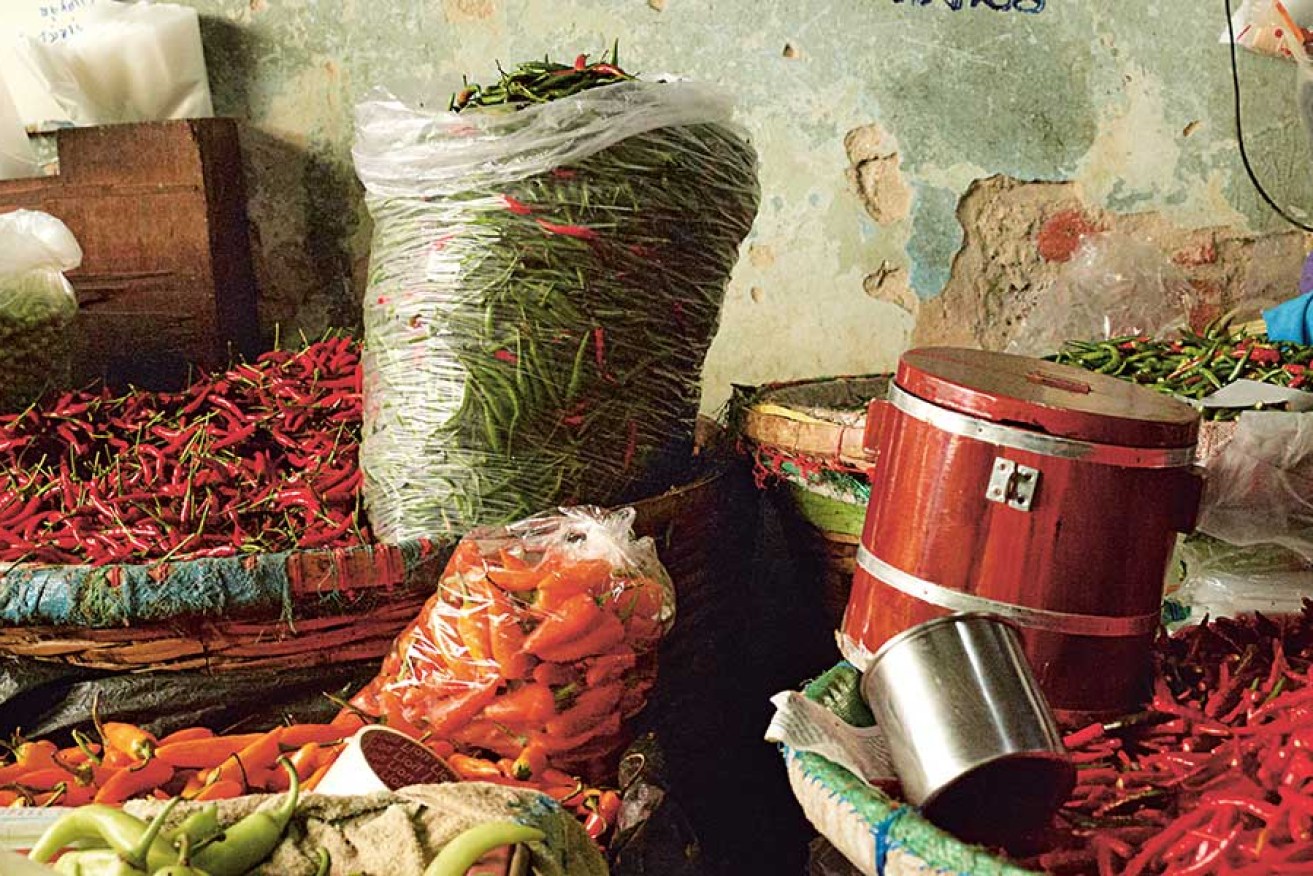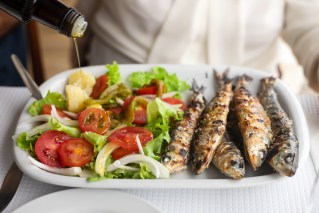Tastes of Thailand, from north to south

Phaidon Press
In this extract from Thailand: The Cookbook, Jean-Pierre Gabriel looks at some of the delights of Thai cuisine, from green papaya salad to massaman curry.
Northern Thailand
Northern Thailand, which hugs the borders of Burma and Laos, has the majority of the country’s mountainous areas. Hill tribes inhabit this landscape, which was, in times gone by, covered with thick forest.
The climate in this region is more variable than elsewhere in the country, but is generally cooler and less humid than other regions. The hilly landscape and the relatively chilly climate partly explain the importance of pork in the diet in this region.
The region’s culinary heritage also boasts several rice specialties. One of the real standouts is glutinous rice, or khao niao, which is traditionally steamed in woven bamboo baskets and eaten by picking up small portions with your fingers.
Northeast Thailand (Isaan)
Northeast Thailand is the country’s largest region, covering about a third of the area of the country. A vast plain with an altitude that varies between 325 feet (100 meters) and 656 feet (200 meters), the region is renowned for its poor soil and arid climate limiting the crops and animals that can be farmed. Rice paddies, for example, occupy more than half of the area’s farmland, but yields are very weak compared to the Central region.
The cuisine of the Northeast directly reflects these climatic and economic conditions. First and foremost, as with other less well-off regions, glutinous (sticky) rice is eaten instead of the more prized long-grain rice.
Northeast Thailand is renowned throughout the country, and indeed the world, for a few signature dishes, including spicy beef salad
Added to this is an abundance of unusual ingredients, such as dried buffalo skin, dried frogs, and large numbers of insects. Among the most popular insects are bamboo caterpillars, house crickets, giant water bugs, and grasshoppers, not forgetting weaver ants and silkworm pupae. Chillis are widely used, which can make some dishes somewhat inaccessible to unprepared palates, even among Thais themselves. Sour notes are also prevalent, usually in the form of leaves from trees or shrubs.
Finally, the cuisine of Northeast Thailand is renowned throughout the country, and indeed the world, for a few signature dishes, including spicy beef salad and its versions of the famous green papaya salad.
Central Plains Region
Often referred to as the “rice bowl of Thailand”— this region has always been a prosperous agricultural area. Its climate is extremely favourable, with a dry season that is counterbalanced by a plentiful supply of water during the rainy season, even if the rains can sometimes result in severe flooding.
It is, therefore, no coincidence that the country’s two most important capital cities should be located there: Ayutthaya, from its founding in 1350 to its destruction in 1767; and Bangkok or Krung Thep, from its founding in 1782 to the present day. This power and stability has had a profound influence on the development of the Central Plains region’s cuisine and produce.
One of the most interesting historical documents about the cuisine of the Court of Siam was written by the future King Rama II, shortly before 1800, which appears in the form of a poem dedicated to his wife, and aimed at celebrating her culinary prowess.
A few of the savoury dishes mentioned reflect the influences of foreign gastronomic cultures, such as the famous massaman curry, prepared with beef or chicken and introduced to Siam by Muslim traders.
Central Thailand is also recognized as the birthplace of most Thai desserts, such as glutinous rice balls in coconut milk.
As for aromatic ingredients, these differ little from those used in other regions of Thailand: ginger, lemongrass, kaffir lime leaves, coriander, spring onion, basil, and mint to name but a few. The favourite forms of spices are the fiery bird’s eye chiles, alongside the saltiness of soy sauce and fish sauce.
Bangkok—The City of Angels
One of the world’s biggest cities in terms of area, Bangkok and its sprawling environs—Greater Bangkok—has an official population of 15 million inhabitants, with the real figure much larger. This number includes many migrants from every region in the country.
An enormous city, Bangkok has all the challenges that modernity brings (overpopulation, long commutes, and traffic), and time is the major factor that dictates the relationship that locals have with food. People tend to cook less at home, preferring instead to buy ready prepared dishes. Those who do stop to sit down to eat will do so in fly-by fashion. Not surprisingly, the street-food phenomenon is reaching its zenith in Bangkok.
Food is prepared and consumed everywhere: in morning and evening markets that are either covered or open-air, on the sidewalk (pavement), or in the shadow of temples or other important buildings. This trend employs an endless workforce—effectively more than 400,000 street traders.
The relationship between food and power can also be seen more recently when Prime Minister Phibunsongkhram launched a campaign in the 1940s in support of nationalism and centralisation with the slogan: ‘‘Enjoy Thai Food, Use Thai Produce.’’ As a result of this, phat Thai—made with fried noodles, egg, tofu, and bean sprouts, and flavoured with sugar, tamarind puree, lime juice, and fish sauce—was elevated to the status of national dish. It is nowadays one of the most popular street-food dishes across Thailand, not to mention one of the best-loved Thai recipes the world over.
Eastern Thailand
Eastern Thailand’s western border is formed more or less by a long coastal strip, which gives the region’s landscape an almost uniform character. The region is also, however, an area of contrasts, mainly between its rural areas along the Cambodian border, and the rather more frenetic seaside towns and cities, most famously Pattaya.
Thailand’s Eastern region has an excellent reputation for the quality of its tropical fruit groves, where rambutan, mangosteen, pomelo, rakam, salaka (snake fruit), and the famous durian abound.
The provinces of the east coast are also renowned for their seafood, or more particularly the manner in which it is prepared: dried fish, dried shrimps, and shrimp paste.
Southern Thailand
This region, which includes several little islands, is famous for its tourist destinations and idyllic beaches: Phuket, Krabi, Koh Samui, Ko Phi Phi, and many more.
In more ways than one, this horn-shaped region, which stretches out into the ocean between the Gulf of Thailand and the Andaman Sea, is reminiscent of a cornucopia. The seas are brimming with fish and seafood, and inland there is a breath-taking abundance and variety of fruit and vegetables. There is lush vegetation everywhere, bearing large amounts of wild edible plants.
The south is also known for its particularly hot food.
Coconut plantations are also a major feature of Southern Thailand. Unsurprisingly, coconuts and coconut milk are key ingredients in the region’s food. Crab is also immensely popular in this region, especially in curries. And on the sweet side, Phuket is renowned for the quality of its pineapples.
In terms of flavouring in this region, the four stalwarts remain: tamarind and lime for sourness; spiciness coming from a large range of chiles; palm sugar bringing sweetness; and saltiness thanks to shrimp paste, southern Thai fish sauce, or budu, and to a lesser extent, soy sauce. The south is also known for its particularly hot food.
From the North of the country to the South, the classic dishes of Thai cuisine can be found—with the occasional local flourish.
Such dishes and the way they are made directly reflect the region’s distinct land and character. It is this that makes the cuisine of Thailand so rich and diverse.















